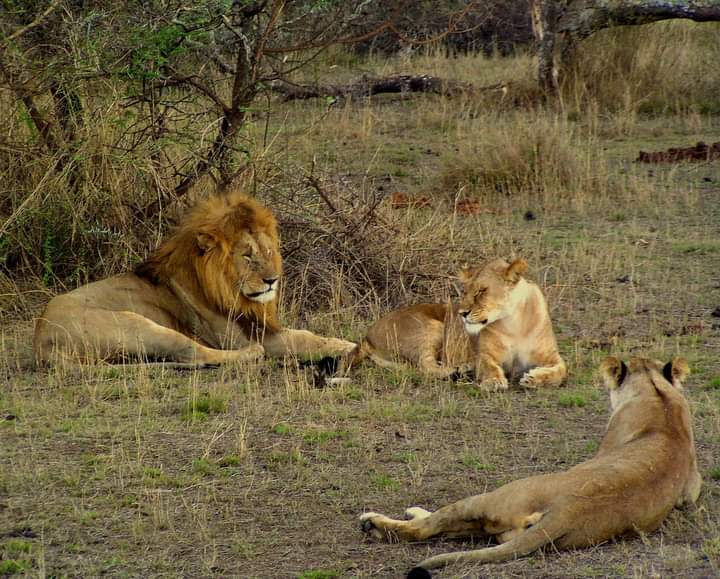
African Lion prides can vary in size and that all depends;
- The quality of its territory
- How much prey is in that area.
- Are there any competitors in that area or rivals?
A pride can consist of as little as 3 4, and up to as many as 40.
A male African lion cub looks like a female until he is about 12 months old, because that is when he begins to grow his mane and his paws are bigger than the females of the same age.
African Lions and lionesses are the supermodels of the African catwalk. They are undoubtedly Africa’s most well-known and admired animal — we all have our favourites, but the lion, quite easily, wins the popularity contest.
This powerful carnivore is the world’s tallest cat — even taller than the Siberian tiger (who many believe is the tallest cat), but not as heavy. Lions and lionesses dominate most African areas, and almost every animal less than 1 kg (2.2 pounds) is on their menu. Nothing is safe from a lion.
A lion is the king, because it is Africa’s top predator — the alpha predator and with no natural predators they had nothing to fear. One pride used to hold territories as big, or even bigger, than the entire area of Los Angeles. Not anymore and they are no longer dominant in certain areas and now have something to fear…
African lion and lionesses greatest defense weapon is their mighty roar (lionesses also roar, not as often as lions, but they do also roar) — it can be heard 8 km (5 miles) away and advertises their presence. Few animals are stupid enough to move closer to the sound of their roar. The listening lions and lionesses can tell how many other lions and lionesses occupy that territory, and can also recognise individuals by their roar.
Most lions move away, but some do not…These cats look for a fight. As said, few animals will walk towards a roar… Other lions, particularly a coalition of mature lions will get up and walk towards the sound — they are ready to fight and hopefully can take over a pride and become the dominant lions in that area and ensure their genes dominate those lands for generations to come. Roars advertise their presence and that comes with the good or the bad.
An African lion’s mane is not there to protect the neck during fights. It has been found that beautiful mane is neither there just for show — they are the only cats to have manes and tufts at the end of their tail. Their mane is there for a different reason, but an important reason: The darker the mane; the older the lion, and the darker and fuller the mane the more attractive he is to the lionesses.
A dark and full mane signify a lion’s power — he is a mature and successful lion and has won many fights. He will defend them and their cubs.
- To us, this lion might not look so grand, but to the lionesses this is a catch!
A lion cub eats meat at 3-4 months, but is only weaned at about 6-9 months.
The oldest and most experienced lioness usually leads the hunt.
A team of lionesses is a formidable hunting team. A lion /ess is an opportunistic hunter — like most predators, taking advantage of hunting opportunities in their area.
Lionesses stalk as close as they can get and the lead lioness ambushes their target and chases it towards the hiding lionesses (hiding in roughly a horse-shoe shape). The prey will usually escape from one lioness, but not a team of lionesses.
We think the African lion is the head or leader of the pride. No, lions come and go and the leaders are the lionesses and a pride is really a matriarchal society (female led). Therefore, the leadership of a pride of lions passes down from the lead lioness to her daughter, and then from daughter to granddaughter — this goes on for generations.
The male African lions usually live 10-14 years, much less than a lioness. The lionesses can reach the old age of 20 years, but tend to stop breeding usually around 15 years.
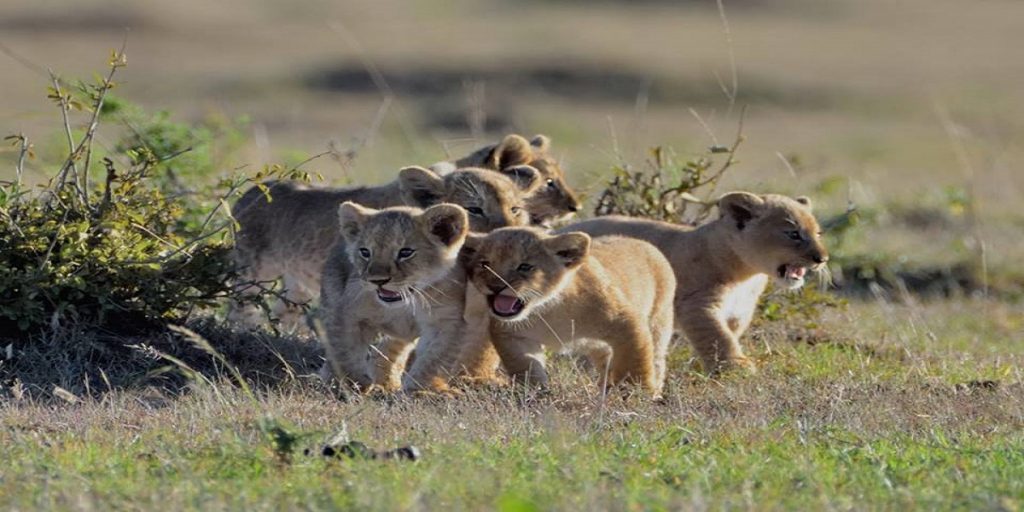
African lion cub’s long-term survival depends on the stability and strength of a pride — like a new dominant lion kills them, or they starve as cubs eat last and if there is not enough food the cubs can starve to death. So, if the pride is strong, they will hunt well and strength also implies to the dominant lion/s — their Father. If he/they are strong they will defend their pride and bring stability to the pride. A stable pride (not broken up) the cubs can grow up and the juvenile males leave before a new lion becomes dominant.
When lioness’ cubs reach 4-6 weeks, the lioness’ pool their cubs together so that they form a creche. A lion’s kindergarten.
The African lion cubs remain in this creche for about 1.5 – 2 years. When cubs are young they all looks similar to that of leopard and cheetah with spots but wear out as they grow.
The African lions in swampy areas — like the Okavango swamps have a more muscular upper body — they need this to propel them through water when pursuing prey.
The male lions are not permanent members of a pride — the lionesses are. A lion seldom remains in a pride for more than 3 years and when a new male enters the pride, he kills the cubs, which the lionesses defend, but as lions are bigger and more powerful, the lionesses often do not win. They do this to bring the lionesses in oestrus again, as while they have cubs, they will not breed. A third of all cubs die this way.
Nowadays, African lion packs can have 3 or 4 lions (males) and rarely more than that– the most documented was a pride with 6 mature males.
When it comes to breeding with the lioness, usually they can breed with lionesses without any fighting between them. The most likely reason is that lionesses tend to come into oestrus at the same time — so there are plenty of lionesses to go around — no serious competition.
When a lioness shows signs she is coming into oestrus, a male will separate her from the pride and guard her and wait until she is ready to accept him. He will then mate with her about every 20 minutes and for a few days (until her oestrus lasts).
African Desert lions
Desert lions are rare, but the few that live in this hot and dry environment are leaner, fitter and most are bigger than the African lions we see in the savannas. They have to be fit as they have to cover vast areas to look for food — in one night, a desert lion can cover 60 km (37 miles).
An African lion is not as fast, nor as agile as a the lighter lioness. His size and power are great for fighting, but this makes him a poor hunter.

We tend to think lions prey only on antelope, but they prey on a few more species. However, the strangest was cormorants — a medium-sized bird, diet is mostly fish and found near salt and sea water, but at the skeleton coast, in Namibia, lions have adapted to that harsh environment and hunt seals and cormorants. It was noted that a lioness would fling herself into a flock of these birds, and always return successfully with an unfortunate cormorant in her jaws.
Did you know this about African Lions?
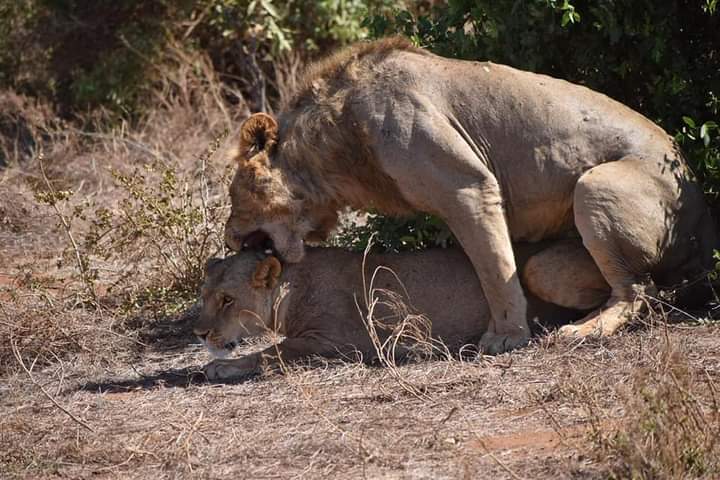
Males bite the back of female’s neck when mating because in all cats,the male’s penis usual has barbs that cause pain during withdrawal hence to prevent attack from the female, the male bites the back of the neck. Now you know.
Then, as seen in the photos, female lions usually roll over and snarls on their back to clear the scent of the male after mating just in case they meet a different male.
A lioness on her own, may go into false oestrus if she has cubs and if a new male arrives on the scene. She does this to protect her cubs, by diverting his interest away from potentially killing the cubs to mating with her.
A male lion can mate up to 100 times a day in a process that lasts only about 17 seconds. They can keep this up for around four to five days!
The male lions seldom hang around with the pride to nurture their cubs and may even kill them.
It’s usually lionesses who approach the male of their choosing, rather than the male approaching the female.
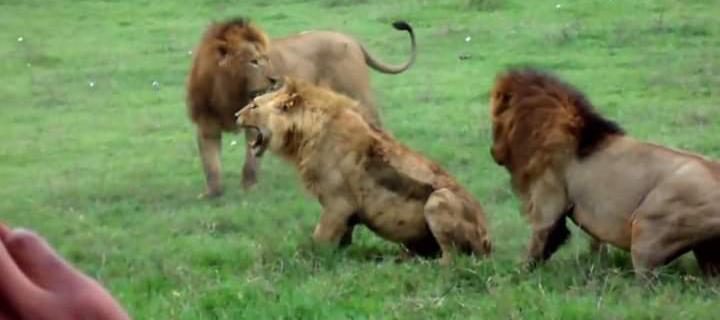
When the sub-adult or juvenile male lion is kicked out of his natal pride — at 2-4 years-old, he becomes a ‘nomadic’ lion and usually joins other males, also without a pride, and they form a coalition. The young lions have time can concentrate on feeding and therefore, have time to grow and get stronger as they no longer have pride or territory commitments. Once they are fully mature, they are ready to take over a territory and pride — usually at 7 years of age.
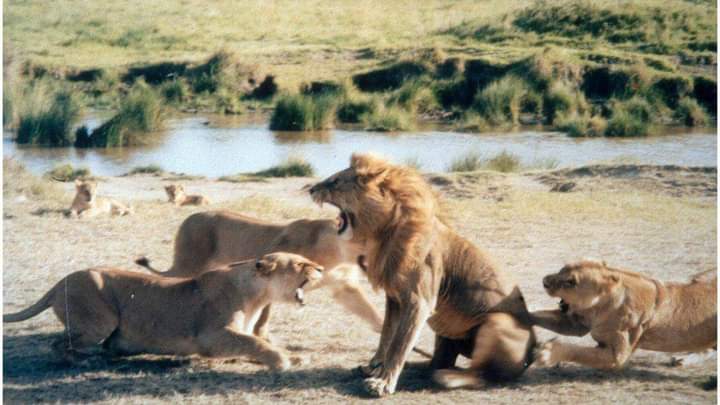
When nomadic African lions are strong and big enough to establish their own territory, and often take over a pride, they may come across all female prides — a 100% lioness dominated pride. One or two African lions will likely have a problem, but more will likely succeed as the lionesses gang up to defend their cubs — as new lions have to kill the cubs so that the lionesses come into oestrus, again. A lion’s main goal is to produce cubs, so that his genes live on. We do not like it, but they are following Nature’s strong laws.
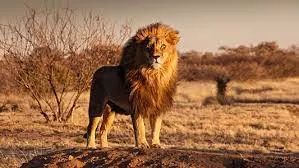
In the entire world the lion is the tallest of the big cats. This is often queried as some think the Siberian tiger is the tallest. No, at the shoulder an adult male lion is taller — the Siberian is the heavier, though.
The lioness will only be fertile again, 2 – 3 years after the birth of her cubs.
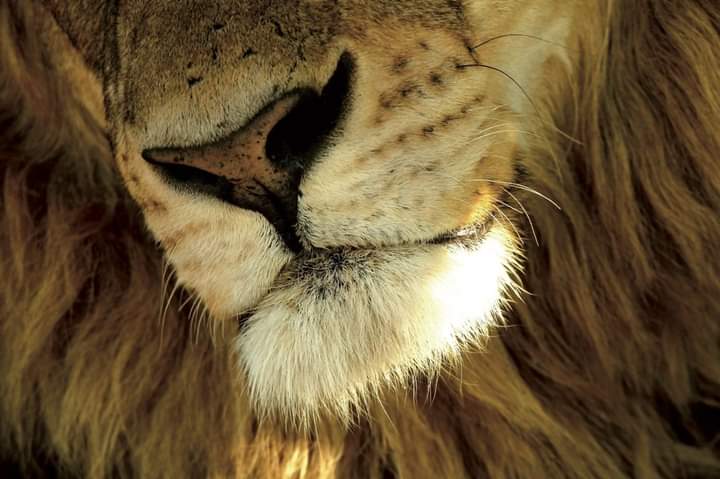
Like many cats, African lions have long and sensitive whiskers that are very important to them as they need these to feel around. At the base of every whisker, is a black dot. Each and every black dot is different to other lions (like our fingerprints).
Testosterone is the male hormone (female is oestrogen). This hormone is responsible for male sexual characteristics.
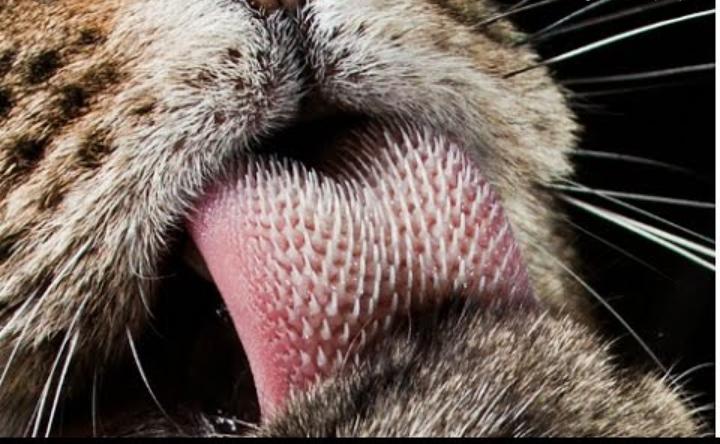
African lion’s tongue is as rough as sandpaper. It is covered in tiny spines, called papillae, which face backwards and are used to scrape meat from bones and dirt from fur. These spines make the tongue so rough that if a lion licked the back of your hand only a few times, you would be left without any skin!
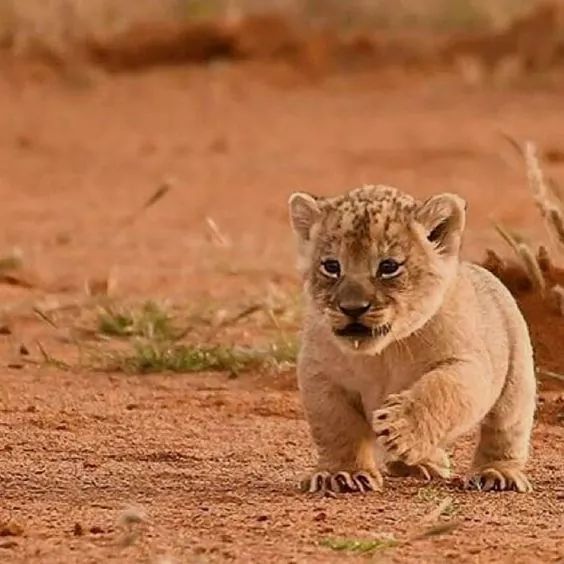
African Lionesses can give birth to a litter of 6-8 cubs, although that is rare. 2-3 cubs are more common. She only has four teats/nipples so if it’s a large litter it’s a fight from the beginning. Survival of the fittest begins early for these little guys.
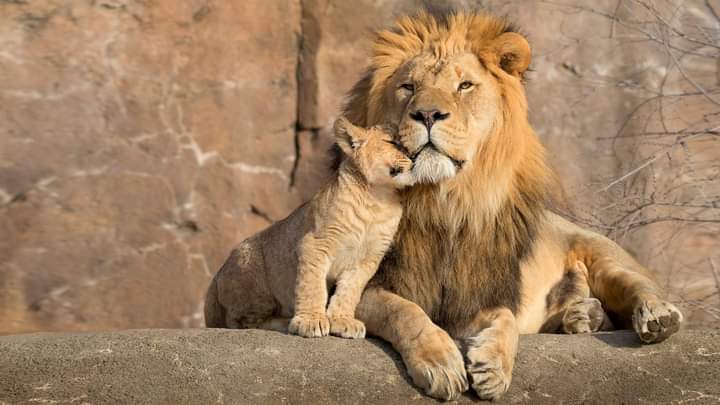
Many wild animals show social behaviour — like African lions. The goal of social behaviour is the passing on of genes. That is important to most animals.

